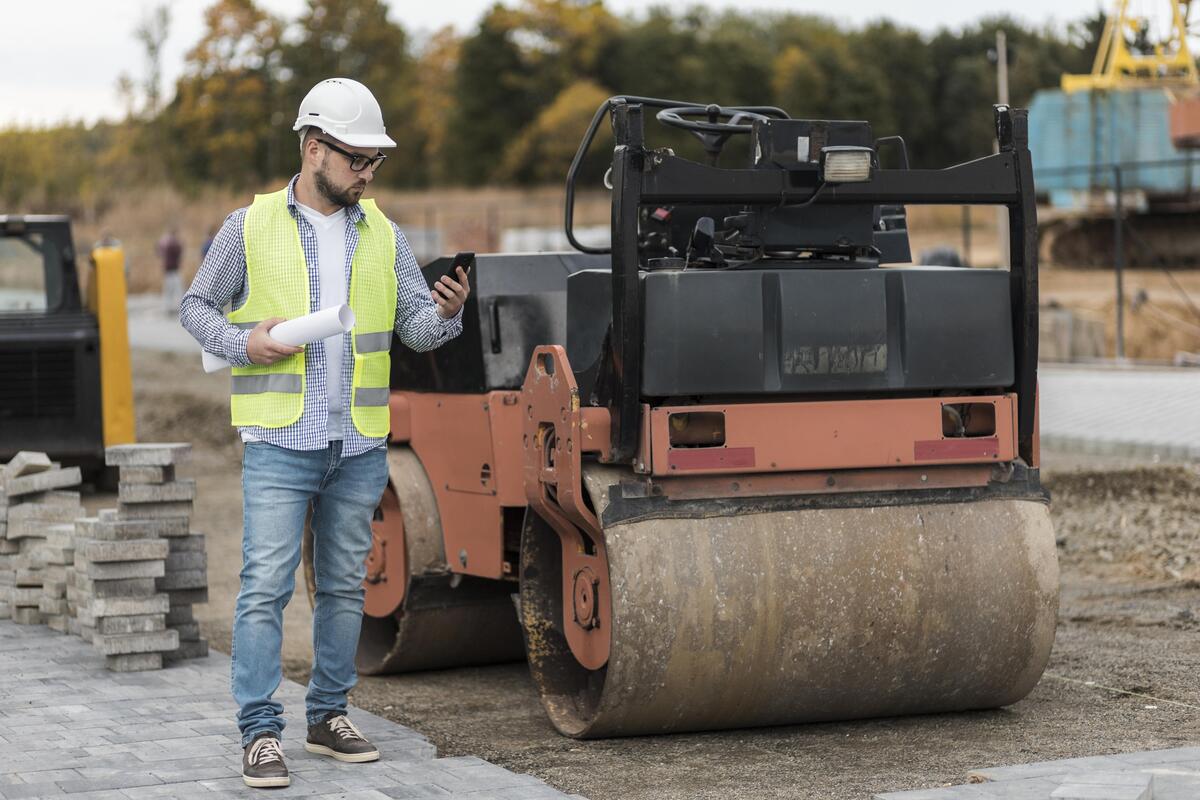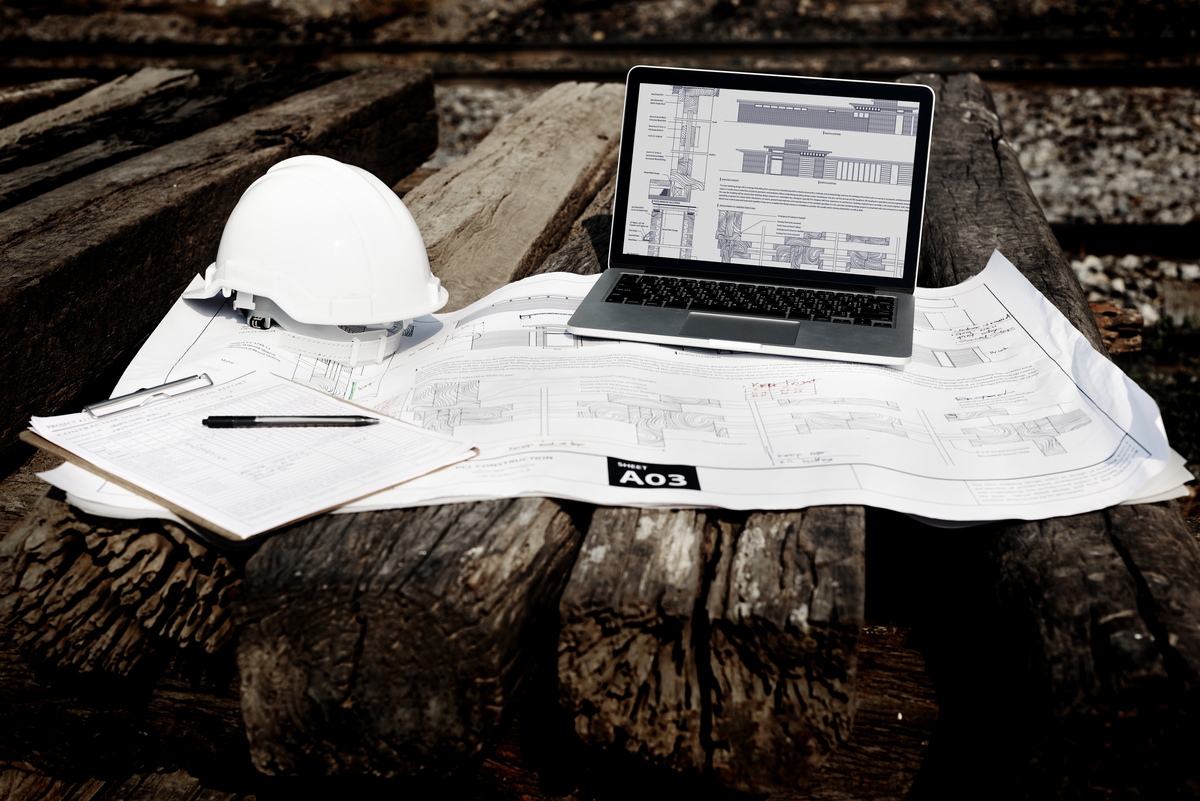Exclusive Neuroject Article: The construction industry relies heavily on Request for Information (RFI) as a way to get clarity, clear up questions, and deal with unforeseen problems that arise throughout the course of a project. RFI in construction help project stakeholders, including architects, engineers, contractors, and subcontractors, communicate so they can obtain crucial data and make wise decisions. The project requirements are understood and implemented with clarity thanks to this collaborative process, which also reduces errors, delays, and expensive rework.
Thanks to technological improvements, RFI in construction industry has undergone a significant change recently. Digital platforms and cloud-based solutions have replaced the outdated paper-based RFI procedure, streamlining the documentation and communication process. Online solutions make it simple to create, distribute, and track RFI in construction, assuring prompt responses and keeping a communication audit trail. Real-time cooperation is made possible by the use of digital tools, removing geographic obstacles and promoting effective decision-making.
Technology has also made it possible to automate and integrate the RFI in construction process. Project teams can save time and effort by using artificial intelligence in construction (AI) and machine learning algorithms to scan RFI answers, spot patterns, and extract insightful data. By enabling data sharing between stakeholders and offering a visual depiction of the project, integration with Building Information Modeling (BIM) tools improves the RFI in construction process.
Table of Contents
Introduction: What is Request for Information (RFI) in Construction?
A request for information (RFI) in the construction industry asks for clarification of plans, drawings, specifications, and agreements. Using a formal written process called a construction RFI, stakeholders like the contractor and designer can fill in any informational gaps in construction documentation.
Although this procedure seems simple, RFI in construction can end up being a source of delays, costs, disputes, and even legal claims. Therefore, it is in everyone’s interest to comprehend how RFI in construction functions and how to use them effectively in building projects.
At various stages of the building process, RFI in construction is used. A contractor may submit an RFI during the bidding process in order to better comprehend the specifics of the project and adjust a quote.
However, it is more typical for a contractor or subcontractor to submit RFI in construction throughout the building process to request clarification from the designer or engineer over a drawing or specification. The contractor or supplier may also utilize an RFI to voice a concern regarding the materials that were specified, get more information regarding the owner’s planned use, or suggest a change or component substitute.
Providing early and thorough responses to RFI in construction aids in the timely completion and cost containment of construction projects. Timely responses also ensure that the building is being constructed in accordance with the plans.

RFI Evolution: Past, Present, and Future
A vital tool in the corporate sector for gathering crucial information and insights prior to making wise decisions is the RFI (Request for Information). RFI practices have seen tremendous evolution, with notable changes happening in the past, present, and future. RFIs were often paper-based, laborious, and time-consuming operations in the past. RFI in construction, however, has drastically changed since the introduction of digital technology and the internet.
The RFI in construction process has been transformed in the present by the usage of online platforms and cloud-based technologies. Since there is no longer a need for paper paperwork, businesses can now develop, distribute, and handle RFI in construction electronically, expediting the entire process.
Real-time updates, simple collaboration, and seamless connection with other business systems are all made possible by these digital platforms. Additionally, automated processes and machine learning tools have been developed to analyze RFI answers, draw forth insightful conclusions, and speed up decision-making.
The development of RFI in construction is anticipated to proceed at an accelerated rate in the future. The RFI in construction process will be improved much further by developments in artificial intelligence (AI) and natural language processing (NLP). Virtual assistants and chatbots with AI capabilities will help with RFI creation, preliminary evaluations, and individualized advice. NLP algorithms will make it possible to extract complex information from RFI responses, as well as to spot patterns and unearth secret knowledge.
RFI in construction will also integrate further with other technologies in the future, like blockchain and the Internet of Things (IoT). By producing a decentralized and impenetrable record of all interactions, blockchain will improve the security and integrity of RFI in construction. Real-time data will be collected by IoT devices, allowing RFI in construction to access dynamic data straight from linked devices and provide more precise and current insights.
Business information gathering has seen a considerable transformation as a result of the evolution of RFIs from paper-based processes to digital platforms. The RFI process has been modified to become more accessible and efficient thanks to current technological improvements.
Looking ahead, AI, NLP, blockchain, and IoT will influence RFI in construction and enable even more advanced data collecting and analysis. Businesses will be able to make better decisions and gain a competitive edge in the changing business environment as they adopt these innovations.

Components of an RFI
Request for Information (RFI) documents in construction play a pivotal role in fostering effective communication and ensuring clarity among project stakeholders. Understanding the key components of an RFI is crucial for initiating and responding to inquiries in a comprehensive manner.
- Header Information:
- Clearly state the project name, date of the RFI, and a unique identifier for tracking purposes.
- Include the names and contact information of the requesting party and the respondent.
- Project Overview:
- Provide a brief summary of the project background, objectives, and any relevant context.
- Outline the specific phase or stage of the project to which the RFI pertains.
- RFI Number and Title:
- Assign a unique identification number to the RFI for easy reference and tracking.
- Include a concise title that reflects the nature of the information being sought.
- Detailed Inquiry:
- Clearly articulate the specific information or clarification being requested.
- Break down complex questions into clear and concise sub-points for better understanding.
- Supporting Documents:
- Attach any relevant drawings, specifications, or documents that provide context to the inquiry.
- Ensure that the attached files are labeled appropriately for ease of reference.
- Response Format:
- Specify the desired format for the response, such as written explanations, drawings, or additional documentation.
- Provide guidelines for clarity and completeness in the respondent’s reply.
- Deadline for Response:
- Clearly state the deadline by which the respondent should provide the requested information.
- Include any implications for project timelines if the deadline is not met.
- Distribution List:
- List the names and contact details of all parties who should receive a copy of the RFI.
- Ensure that the RFI is distributed to the relevant stakeholders for a comprehensive response.
- Signature and Date:
- Include spaces for the signatures of the requesting and responding parties, indicating acknowledgment of the RFI.
- Specify the date by which the RFI was issued and the expected date for the response.
Understanding and meticulously addressing each of these components ensures that the RFI serves its purpose effectively. Clear and well-structured RFIs not only facilitate efficient communication but also contribute to the overall success of construction projects by preventing misunderstandings and delays.
Importance of Technology in RFIs (2024 Trends)
As we navigate through the dynamic landscape of the construction industry in 2024, the role of technology in Request for Information (RFI) processes has become increasingly pivotal. Technological advancements are reshaping the way construction professionals manage and respond to RFIs, introducing efficiencies, improving collaboration, and minimizing potential delays. Here’s an exploration of the importance of technology in RFIs, along with the anticipated trends for 2024:
- Digital Collaboration Platforms:
- Importance: Technology facilitates the shift towards digital collaboration platforms, enabling seamless communication among project stakeholders.
- 2024 Trend: Anticipate a rise in the use of cloud-based collaboration tools that provide real-time updates, document sharing, and instant communication, enhancing overall project coordination.
- Automated RFI Management Systems:
- Importance: Automation streamlines the RFI process, reducing manual effort, minimizing errors, and accelerating response times.
- 2024 Trend: Expect an increased adoption of AI-driven systems that can categorize and prioritize RFIs, ensuring that urgent inquiries receive prompt attention and resolution.
- Mobile Accessibility:
- Importance: Mobile applications empower construction professionals to manage RFIs on the go, fostering agility and responsiveness.
- 2024 Trend: Look for advancements in mobile-friendly RFI platforms, allowing stakeholders to access and respond to inquiries from their smartphones or tablets, promoting flexibility in project management.
- Building Information Modeling (BIM) Integration:
- Importance: BIM integration enhances the clarity of RFIs by providing a visual context to inquiries, reducing misinterpretations.
- 2024 Trend: Anticipate further integration of BIM technologies into RFI processes, enabling stakeholders to visualize and comprehend project details more comprehensively.
- Artificial Intelligence for Data Analysis:
- Importance: AI-driven analytics tools can process vast amounts of data, extracting insights to improve decision-making in the RFI process.
- 2024 Trend: Expect an increase in the use of AI algorithms to analyze historical RFI data, identify patterns, and offer proactive suggestions for potential issues, contributing to more informed decision-making.
- Blockchain for Security and Transparency:
- Importance: Blockchain ensures the security and transparency of RFI data, reducing the risk of disputes and enhancing trust among project participants.
- 2024 Trend: Watch for the integration of blockchain technology in RFI processes to secure data integrity and create an immutable record of RFI transactions.
Embracing these technological trends in the RFI process not only optimizes efficiency but also contributes to the overall success of construction projects. The industry’s trajectory towards technology-driven solutions reflects a commitment to innovation and continual improvement in managing the complexities of modern construction projects.
What are the Benefits of RFI in Construction?
Requests for Information (RFIs) are an essential tool in the construction sector since they help project stakeholders collaborate and communicate effectively. It works well for getting answers, resolving problems, and controlling project risks. Numerous advantages of RFI in construction contribute to better project outcomes.
RFI in construction, in the first place, assists in reducing misconceptions and ambiguities in project documents. Complex designs, requirements, and contractual commitments are a part of construction projects. RFI in construction gives stakeholders the chance to ask questions about the information that is murky or inconsistent, ensuring that everyone is informed on the project’s needs. By doing this, the possibility of expensive mistakes, rework, and disagreements during the construction process is decreased.
Second, RFI in construction makes it possible to find and fix potential design conflicts or constructability problems. Through RFIs, contractors and subcontractors can express their worries about design specifics, material requirements, or logistical limitations. By addressing problems early on in the project lifecycle, this proactive strategy helps to avoid delays, cost overruns, and disruptions. Construction teams may efficiently make judgments, modify plans, and carry out essential adjustments by getting quick clarification.
Furthermore, RFI in construction lets project participants communicate clearly with one another. They offer an organized means of communication and information sharing, ensuring that all parties involved are informed of pertinent project developments and choices. Project managers can evaluate progress, spot trends, and deal with reoccurring problems by documenting and tracking RFI in construction. Transparency, accountability, and overall project coordination all benefit from this.
RFI in construction also aids in risk management for building projects. Project participants can proactively address potential risks and adopt appropriate risk-mitigation steps by raising concerns or uncertainty through RFIs. This might entail looking for different design approaches, undertaking further research, or altering project timelines. Risk management skills help to reduce the possibility of expensive disruptions or safety problems.
RFIs are also an important source of documents for contractual and legal requirements. They offer a record of conversations, judgments, and approvals pertaining to the project. RFIs can be used as evidence to show due diligence, adherence to contractual responsibilities, and attempts to resolve problems in good faith in the event of disputes or claims.
Therefore the advantages of RFI in construction are clear. They promote communication, minimize risks, increase communication clarity, and provide useful documentation. Construction projects can benefit from better outcomes by making good use of the RFI in construction process, such as decreased rework, improved schedule adherence, and increased stakeholder satisfaction.

How to Write an RFI? Comprehensive Guide to RFI Standards
To obtain accurate and pertinent information from potential suppliers or contractors, a well-written Request for Information (RFI) is necessary. An RFI is a crucial tool in the procurement process since it enables businesses to learn more, evaluate their capabilities, and decide with knowledge. This in-depth manual will describe how to write an RFI step-by-step and offer information on industry standards and best practices.
Establish Your Goals: Your RFI’s goals and purpose should be made very clear. Determine the precise details you require from prospective vendors or contractors. This may involve their knowledge, skills, price plans, delivery schedules, or any other pertinent elements. Your RFI in construction will effectively express your requirements if it has a clearly stated aim.
Structure and Format: Arrange your RFI in a clear, orderly fashion. Start with an executive summary that summarizes the project and its most important requirements. Detail-oriented sections that focus on particular facets of the project are then included. Making the RFI accessible and navigable requires the use of headings, bullet points, and numbered lists. Include a way to reach you if you have any questions or need clarifications.
Give Background Information: Give details about your company, your project, or any particular requirements. Potential vendors will be better able to respond to you by understanding your situation thanks to this information. Any legal or compliance criteria that sellers must adhere to are stated in clear terms.
Ask precise Questions: In your RFI, ask precise questions to get the data you require. Focus on the crucial elements and be clear and succinct. Make sure all the pertinent topics are covered in your questions, such as technical skills, experience, prior results, references, cost, and any unique requirements or concerns.
Establish a Realistic Timeline: Give vendors a reasonable amount of time to deliver their responses. This will give prospective providers time to plan appropriately and respond in a precise and considerate manner. To guarantee that everyone is using the same information, think about giving participants a deadline for clarification inquiries.
Follow RFI Best Practices and Standards: Follow RFI guidelines to guarantee consistency and precision in your communications. Industry-specific rules or standards like the Uniform Construction Index (UCI) offer helpful frameworks for crafting strong RFIs. To maintain consistency and raise the caliber of your responses, make use of existing templates or examples.
Careful planning, transparent communication, and adherence to predetermined criteria are necessary for writing an effective RFI. You can develop an RFI that accurately reflects your requirements and generates insightful replies from possible vendors by following the steps indicated in this thorough guide. In order to continuously enhance your procurement process, keep in mind to examine and modify your RFI in light of feedback and experience.
Collaboration and Communication Strategies
Effective collaboration and communication are foundational elements for the success of construction projects, and these principles are particularly critical in the context of Request for Information (RFI) processes. In this section, we delve into key strategies to enhance collaboration and communication when dealing with RFIs in the construction industry:
- Early Engagement of Stakeholders:
- Strategy: Encourage early involvement of all relevant stakeholders in the RFI process, including architects, engineers, contractors, and subcontractors.
- Rationale: Early engagement fosters a shared understanding of project requirements, minimizing the need for extensive clarification later in the process.
- Centralized Communication Platforms:
- Strategy: Utilize centralized communication platforms that facilitate real-time interaction and document sharing.
- Rationale: Centralized platforms ensure that all stakeholders have access to the latest information, reducing the risk of miscommunication and ensuring a unified view of project details.
- Clear Communication Protocols:
- Strategy: Establish clear communication protocols for submitting, reviewing, and responding to RFIs.
- Rationale: Clear protocols streamline the RFI process, minimizing confusion and expediting resolution times.
- Collaborative Workshops and Meetings:
- Strategy: Conduct collaborative workshops and regular meetings to discuss potential RFIs and address concerns proactively.
- Rationale: Collaborative sessions provide a forum for stakeholders to share insights, ask questions, and collectively find solutions, fostering a collaborative project environment.
- Utilization of Visual Aids:
- Strategy: Incorporate visual aids such as drawings, diagrams, or 3D models to enhance the clarity of RFIs.
- Rationale: Visual aids help stakeholders better understand the context of inquiries, reducing the likelihood of misinterpretation and ensuring precise responses.
- Digital Documentation and Version Control:
- Strategy: Embrace digital documentation and version control systems to manage RFIs and related documents.
- Rationale: Digital systems enhance organization, reduce the risk of version conflicts, and provide an auditable trail of communication and decisions.
- Transparent Feedback Mechanisms:
- Strategy: Implement transparent feedback mechanisms, allowing stakeholders to provide comments or suggestions on RFIs.
- Rationale: Transparent feedback fosters a culture of continuous improvement and ensures that the RFI process evolves based on the collective insights of the project team.
- Training and Familiarization:
- Strategy: Provide training sessions to ensure that all project team members are familiar with RFI processes, protocols, and the use of relevant tools.
- Rationale: Well-informed team members are more likely to contribute effectively to the RFI process, reducing the potential for errors and delays.
- Regular Project Updates:
- Strategy: Issue regular project updates to keep all stakeholders informed about the project’s progress and any changes that may impact RFIs.
- Rationale: Regular updates contribute to transparency, align expectations, and minimize surprises, fostering a collaborative and communicative project culture.
Implementing these collaboration and communication strategies within the RFI process establishes a framework for effective teamwork, reduces the likelihood of misunderstandings, and contributes to the overall success of construction projects.
RFI Lifestyle: Documentation, Formulation, and Traceability
Request for Information, or RFI, is important in many sectors of the economy, including the consumer goods and leisure sectors. In order to ensure that products satisfy quality standards, abide by regulations, and offer consumers transparency, the RFI in construction process in the lifestyle industry includes documentation, formulation, and traceability. For lifestyle brands to remain authentic and credible, a three-pronged strategy is essential.
In the lifestyle sector, documentation is a vital component of the RFI in construction process. It entails compiling thorough documentation of the requirements, components, sourcing details, and manufacturing procedures of goods. These records enable openness and accountability by serving as a reference for internal stakeholders, governing bodies, and clients. Additionally, documentation makes it easier to identify possible concerns, such as allergens or environmental effects, enabling businesses to take preventative action to address them.
In the lifestyle sector, the process of developing and fine-tuning product formulations or recipes is referred to as formulation. RFI in construction is used to collect data from manufacturers, suppliers, and industry experts on the ingredients, additives, and any potential environmental or health risks in product composition. Lifestyle businesses may distinguish themselves and satisfy the changing needs of conscientious consumers by creating products with an emphasis on safety, sustainability, and quality.
In the lifestyle industry, traceability is a crucial part of the RFI in construction process because it ensures accountability and end-to-end visibility throughout the supply chain. RFI in construction lets brands gather data on the country of origin of raw materials, ethical sourcing methods, and industrial process environmental effects. Through tracing the path of their products, brands may solve social and environmental issues, ensure regulatory compliance, and increase consumer trust.

Common Challenges and Solutions
Navigating the Request for Information (RFI) process in construction comes with its set of challenges that, if not addressed proactively, can lead to delays, misunderstandings, and increased project costs. Recognizing these challenges and implementing effective solutions is crucial for the seamless execution of construction projects. Here, we explore some common challenges associated with RFIs and propose strategies to overcome them:
- Delayed Response Times:
- Challenge: Delays in receiving responses to RFIs can impede project progress.
- Solution: Set clear expectations for response times, establish a streamlined review process, and leverage technology to automate and expedite the RFI workflow.
- Unclear or Incomplete RFIs:
- Challenge: Ambiguous or incomplete RFIs can lead to misunderstandings and the need for additional clarifications.
- Solution: Implement comprehensive RFI templates, provide detailed instructions, and encourage stakeholders to seek clarification before submitting inquiries.
- Overlapping RFIs:
- Challenge: Simultaneous submission of overlapping RFIs can create confusion and redundancy.
- Solution: Foster communication among project teams to coordinate RFI submissions, and utilize digital tools to track and manage RFIs to avoid duplications.
- Ineffective Communication:
- Challenge: Poor communication channels can hinder the dissemination of critical RFI-related information.
- Solution: Establish centralized communication platforms, conduct regular meetings, and ensure that all stakeholders are well-informed about communication protocols.
- Disputes and Misinterpretations:
- Challenge: Misinterpretations of RFI content can lead to disputes and project setbacks.
- Solution: Emphasize clarity in RFI submissions, utilize visual aids when necessary, and encourage open communication for swift issue resolution.
- Lack of Standardization:
- Challenge: Inconsistencies in the format and structure of RFIs can create confusion and hinder the review process.
- Solution: Implement standardized RFI templates and ensure that all project participants adhere to a consistent format when submitting and responding to RFIs.
- Limited Accessibility to Project Information:
- Challenge: Difficulty accessing project information may hinder stakeholders from providing accurate RFI responses.
- Solution: Utilize centralized project management platforms, implement robust document control systems, and ensure that all stakeholders have access to up-to-date project data.
- Insufficient Training and Familiarity:
- Challenge: Inadequate understanding of RFI processes and protocols can lead to errors.
- Solution: Provide comprehensive training sessions for project team members, offer resources for ongoing education, and ensure that everyone involved is familiar with RFI management tools.
- Inefficient Review Processes:
- Challenge: Slow or inefficient review processes can result in prolonged response times.
- Solution: Streamline the RFI review process, assign responsibilities clearly, and leverage digital tools to automate and track review stages.
By proactively addressing these challenges with well-defined solutions, construction projects can enhance the efficiency of the RFI process, foster collaboration among stakeholders, and mitigate potential disruptions to project timelines.
RFIs and Construction Management Software
RFIs (Request for Information) are essential in the construction sector since they help project stakeholders communicate and share information effectively. Construction management software has become a potent instrument that strengthens the RFI process as a result of technological advancements in efficiency, teamwork, and project outcomes.
RFIs can be created, managed, and tracked digitally using construction management software. It streamlines the entire RFI operation and does away with the need for manual paperwork. RFIs can be electronically created, distributed to the proper parties, and attached with pertinent drawings or documents. RFIs are channeled to the appropriate people or teams thanks to the software, which cuts down on delays and misunderstandings. Additionally, it enables real-time collaboration, allowing stakeholders to debate and effectively address problems.
Additionally, RFI tracking and monitoring are improved by construction management software. It offers a central database where all RFIs and the responses to them are kept, making it simple to access and examine earlier data. This functionality is very helpful for big projects with plenty of stakeholders and RFIs. The status of RFIs may be tracked, priorities can be set, and response times can be watched, assuring prompt resolution and reducing any delays.
Additionally, BIM (Building Information Modeling) software and document management systems are frequently integrated with construction management software. RFIs are connected to the pertinent project documentation and design models thanks to this integration’s smooth data transmission and information synchronization. It enables stakeholders to have a thorough understanding of the project, allowing them to make educated decisions and give precise answers to RFIs.
The RFI procedure has been transformed by construction management software, which provides many advantages for the construction sector. The generation, distribution, and tracking of RFIs are all streamlined, which boosts productivity and communication among project stakeholders. The synchronization of data and improved cooperation are benefits of integration with other project management software. Construction workers may streamline the RFI in construction procedures, reduce delays, and ultimately deliver successful projects by utilizing construction management software.
RFI Software and Tools: A Comprehensive Analysis of Leading Solutions
Software and solutions for RFI (Request for Information) have proven crucial in expediting the RFI process, enabling businesses to quickly obtain data and make wise decisions. By highlighting their essential characteristics, advantages, and user testimonials, the top RFI solutions on the market will be examined in this thorough analysis.
Procore, a popular platform for construction management, is a well-known RFI tool. Procore has powerful RFI features that let users produce, distribute, and track RFIs in one place. Effective communication between project stakeholders is ensured by the customized RFI templates, real-time collaboration, and automated notifications provided by it. Additionally, Procore interacts with other construction software to improve information sharing and project management.
PlanGrid, a construction productivity tool with effective RFI handling tools, is another noteworthy option. Users of PlanGrid can assign responsibility, attach images, and create RFIs directly from drawings. It enables smooth contact with project teams and offers a visual interface for tracking RFI status. The mobile app for PlanGrid makes it easier to create and collaborate on RFIs while on-site.
Aconex is a complete cloud-based platform that stands out in the world of enterprise-level solutions. Advanced RFI management features from Aconex are available, such as customizable workflows, automated routing, and integrated document control. It is appropriate for large-scale projects with foreign teams since it offers audit trails for RFI history and facilitates multilingual collaboration. In order to ensure smooth data interchange, Aconex also interacts with other project management and BIM applications.
Customer testimonials are extremely important when assessing RFI tools and software. Procore is highly praised by users on software review sites like Capterra and G2 for its intuitive user interface, robust collaboration tools, and first-rate customer service. PlanGrid is praised for its simple mobile app, efficient RFI processes, and seamless incorporation with other construction tools. The vast functionality, scalability, and strong security features of Aconex are frequently praised.
The review of top RFI tools and software shows the wide range of options for streamlining the RFI in construction process. Considerable choices include Procore, PlanGrid, and Aconex, each of which provides special features and advantages catered to particular project requirements. Customer testimonials offer insightful information on the usability of these products and the degree of customer satisfaction. Organizations may improve their effectiveness, communication, and decision-making processes in the context of data collection and analysis by utilizing this cutting-edge RFI software and solutions.

Case study: RFI in a Complex Construction Scenario
The use of RFIs (Requests for Information) is essential for guaranteeing good communication, coordination, and problem-solving among diverse stakeholders in a complicated construction environment. RFIs’ importance in managing challenging construction projects is highlighted by a case study looking at their use in such situations.
A significant construction project involving numerous general contractors, subcontractors, and design teams was in progress in this case study. Due to the project’s complexity, RFIs were required in order to address numerous concerns, clarify specifications, and gather vital data. RFIs were used as a method for effective communication to close the gap between design intent and on-site implementation, allowing stakeholders to get answers to their questions and settle disputes.
According to the study, RFIs helped to speed up answers and resolutions, avoiding delays and rework. RFIs provided an audit trail of choices by documenting the questions and answers given and received, which was crucial for preventing conflicts and guaranteeing responsibility. RFIs also made it possible for stakeholders to work together, promoting a transparent and cooperative environment that increased the project’s overall efficiency.
The case study also showed that the RFI process was greatly expedited by the use of digital technology, such as cloud-based RFI management tools. Stakeholders were able to develop, manage, and track RFI in construction in real-time using these tools, which eliminated manual effort and decreased administrative load. The consolidated database of RFI in construction made it simple to retrieve information and enhanced team collaboration.
Technological Innovations and Future Trends of RFI in Construction
The construction business has been fast changing as a result of technological advancements, and the Request for Information (RFI) procedure is no exception. RFIs are essential for simplifying communication, resolving problems, and assuring the success of building projects. The way RFIs are handled in the construction sector has changed as a result of recent technical developments and emerging future trends.
The use of cloud-based construction management software is one major technical advancement in RFI in construction. These platforms offer stakeholders a centralized area where they can create, submit, and follow up on RFIs. They provide automated workflows, document management, and real-time communication, streamlining the RFI in construction procedures and speeding up response times. The accuracy and effectiveness of RFIs are further improved by cloud-based solutions’ seamless connection with other project management tools, such as Building Information Modeling (BIM) software.
Mobile application use is a prominent development in RFI technology. Mobile apps enable quick response times and on-site issue resolution for construction industry workers by allowing them to access RFIs on their cellphones or tablets. Project teams may stay in touch and informed with the help of these apps, which frequently provide features like offline access, photo attachments, and real-time notifications.
Future developments in technology, including artificial intelligence (AI) and machine learning (ML), are anticipated to further transform the RFI procedure. Chatbots and virtual assistants with AI capabilities can help with RFI generation, frequently asked questions and task automation. ML algorithms may examine past RFI data, spot trends, and offer insightful predictions, allowing for proactive decision-making and problem prevention.
Additionally, there is tremendous potential for RFIs to incorporate augmented reality (AR) and virtual reality (VR) technologies. By visualizing intricate building details, AR and VR can improve communication by enabling stakeholders to virtually tour the project and engage with the suggested improvements. The RFI process can be sped up by using this immersive experience to increase comprehension, decrease errors, and hasten decision-making.
The RFI procedure in the construction sector has been considerably altered by technological advancements. The ways in which RFI in construction are created, managed, and resolved are changing thanks to cloud-based software, mobile applications, AI, ML, AR, and VR. These developments boost efficiency, facilitate collaboration, and produce superior project results. The future of RFI in construction holds the potential for increased automation, wise decision-making, and seamless interaction with other project management tools as the construction industry continues to adopt new technologies.
Suggested article for reading:
The Top 7 Green Architecture Projects
important construction technology in 2024
7 Important Building Technology Ideas for 2024
Resources:
Journal of Management Information Systems | International Journal of Project Management | construction-institute.org | Journal of Management in Engineering | Journal of Information Technology in Construction | plangrid.com | buildinggreen.com
For all the pictures: Freepik



